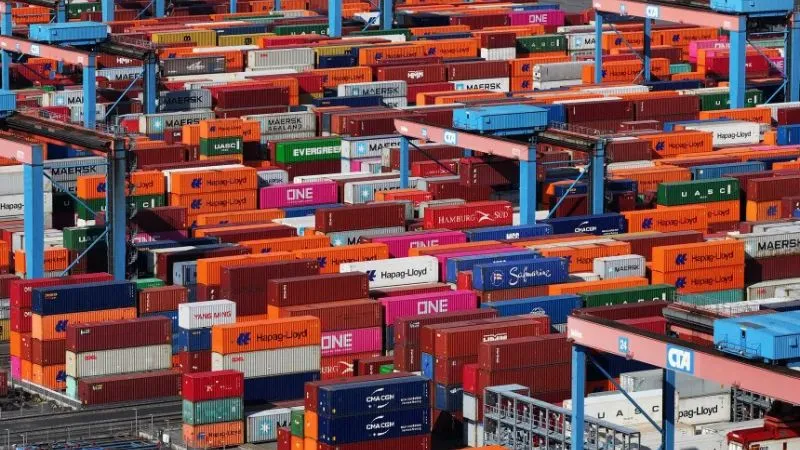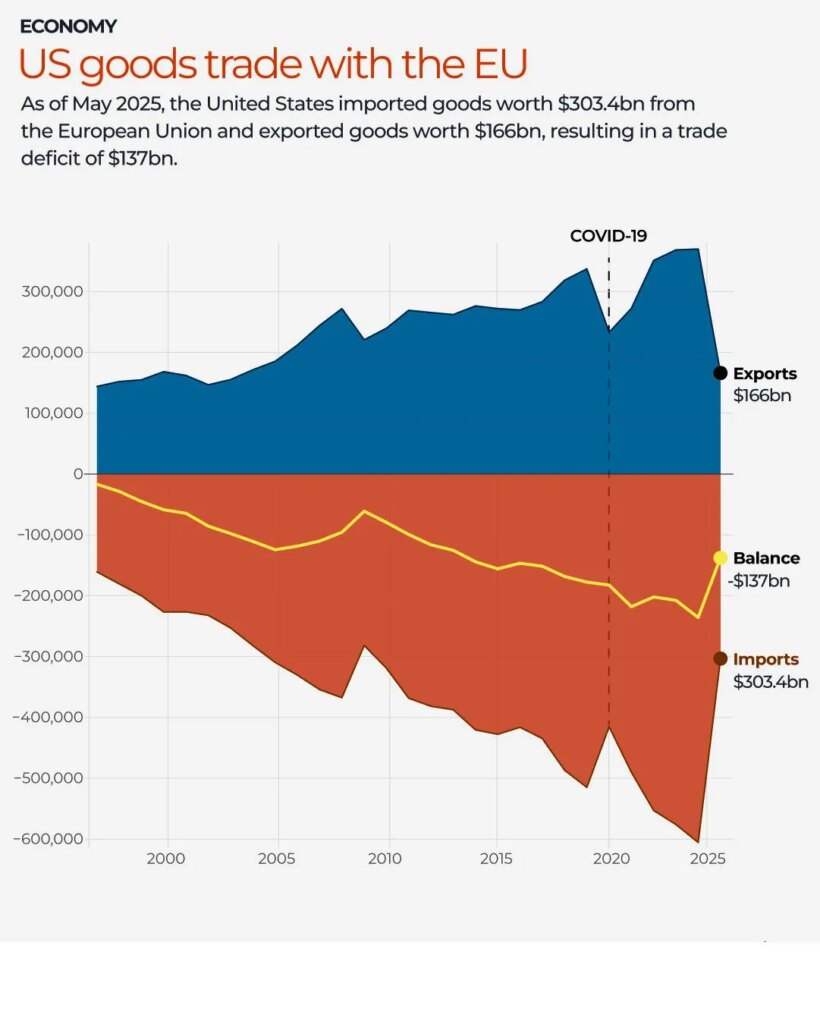US-EU Tariff Deal: A Big Win for Trump That Doesn’t Totally Beat Brussels
The world’s trade picture has changed big time with the new US-EU trade deal. President Trump calls it the “biggest…
The world’s trade picture has changed big time with the new US-EU trade deal. President Trump calls it the “biggest deal ever made.” This huge agreement is a major win for Trump while giving Europe a way to avoid a terrible trade war.
Trump’s EU Trade Deal: Key Points
• 15% tariff rate on most European goods (down from 30% threat)
• $1.35 trillion total investment ($750B energy + $600B direct investment)
• Zero tariffs on aircraft, pharmaceuticals, chip equipment, generic drugs
• European automakers (BMW, Mercedes, VW) face 15% rate but avoid disaster
• American energy exporters get guaranteed European market access
• Reduces Russian gas dependence for Europe through US energy imports
• Job creation in American manufacturing from European investments
• Win-win outcome – Trump gets concessions, Brussels protects key industries
• Avoids trade war while strengthening US-EU economic partnership
• Strengthens NATO alliance through energy security cooperation
1. The Deal’s Main Parts: Understanding the 15% Plan
The main part of this historic deal is a 15% tax on most European goods coming into America. This is much less than Trump’s first threat of 30% taxes.
Key parts include taxes on European exports especially cars. But the deal also has important exceptions for certain industries which protects important business areas.
The World Trade Organization rules provide the legal foundation for these deals between countries. This tax plan builds on Trump’s broader approach to EU and Mexico tariff policies that has changed global trade in 2025.
1.1 Smart Exceptions That Help European Business
The deal includes big exceptions. Airplane parts some chemicals and medicines computer chip equipment farm products generic drugs and raw materials will have zero taxes. These exceptions protect Europe’s best industries including airplane making and medicine companies.
1.2 Car Industry Effects and Market Changes
The car industry will face the normal 15% tax rate. This is a controlled approach to one of the biggest problem areas where European car makers like BMW Mercedes-Benz and Volkswagen have big US market shares.

The 15% rate is manageable compared to the terrible damage that 30% taxes would have caused.
2. The $1.35 Trillion Investment Promise: Changing Economic Relations
The deal includes huge investment promises. $750 billion in US energy purchases over three years and another $600 billion in direct US investments. This creates a partnership that deals with energy security economic growth and political stability.
2.1 Energy Security and Independence
The $750 billion energy promise serves many goals. For the US it gives a huge market for American energy exports. For Europe it offers a way to depend less on Russian energy supplies fixing a major problem.

According to the International Energy Agency energy security has become very important for European countries making American energy imports a top priority.
European Commission President von der Leyen said this energy partnership will help Europe use even less Russian gas which is a big political victory.
2.2 The $600 Billion Direct Investment Plan
The $600 billion investment promise means European money flowing into American manufacturing technology and infrastructure. This money injection will create jobs and boost technology innovation across many American states focusing on areas where European companies are really good.
3. Economic Impact Study: Winners and Challenges

American exporters especially in energy are clear winners with guaranteed European market access worth hundreds of billions. Manufacturing areas will benefit from more European investment possibly creating hundreds of thousands of jobs.
European businesses have mixed results. While some areas benefit from tax exceptions others must adapt to new competition. However knowing the 15% rate allows for planning that was impossible under changing tax threats.
4. Political Effects: Stronger US-Europe Relations
This trade deal goes way beyond money matters. It represents a new alignment that strengthens US-Europe relations during uncertain times and competition from other major powers.
4.1 Partnership Against Global Competition
The deal positions the US and EU as partners facing competition from China and other growing economies. By creating special trade arrangements and investment plans both sides strengthen their positions in global supply chains and technology competition.
The Atlantic Council analysis suggests that this partnership creates a foundation for broader cooperation on technology standards security issues and global economic governance. This stronger relationship comes at a time when European unity faces challenges as seen in France’s recent recognition of Palestine highlighting the importance of keeping strong US-EU economic ties despite occasional diplomatic differences.
4.2 NATO and Security Parts
The energy part of the deal has big security effects reducing European dependence on unreliable energy suppliers while strengthening the economic foundation of NATO alliance relationships. Energy security directly means national security making this agreement very important for alliance unity.
5. Putting It Into Action and Future Outlook
Successful implementation needs careful coordination between government agencies private sector stakeholders and international organizations. Both parties must create strong systems for watching compliance with tax schedules and investment promises.
The complexity of modern supply chains means that implementation will need sophisticated tracking systems to ensure correct application of tax rates and exceptions across thousands of product types. The administration’s ability to implement such complex trade policies has been strengthened by recent Supreme Court rulings that expand executive authority in trade matters.
The agreement’s long-term success depends on keeping the framework through political changes and changing economic conditions. Market changes and technology developments will need periodic adjustments to keep effectiveness.
6. Consumer and Market Effects
While 15% taxes on certain European goods may lead to small price increases for American consumers the structured approach provides predictability for retailers and distributors. The exceptions for medicines and essential goods help minimize consumer impact in critical categories.
European companies keep significant market access while facing managed competition. The investment promises create opportunities for European companies to set up American operations possibly leading to job creation and technology transfer.
7. Conclusion
The US-EU trade agreement represents a masterful diplomatic achievement that creates real wins for both parties while avoiding the terrible economic damage that would have resulted from an all-out trade war. Trump’s administration successfully got significant concessions including massive investment promises and energy purchases while establishing a predictable tax framework that gives American manufacturers managed protection.
For Brussels the agreement represents success in protecting key European industries through targeted exceptions while securing market access under predictable conditions. The energy purchase promises align with European goals of reducing Russian energy dependence creating real value beyond just trade considerations.
This landmark agreement shows that even in an era of trade tensions and global competition smart diplomacy can create frameworks that serve the interests of both parties while strengthening broader partnerships. The real test will be implementation but the foundation established through this agreement provides a strong platform for continued US-Europe economic cooperation and partnership in an increasingly complex global environment.






